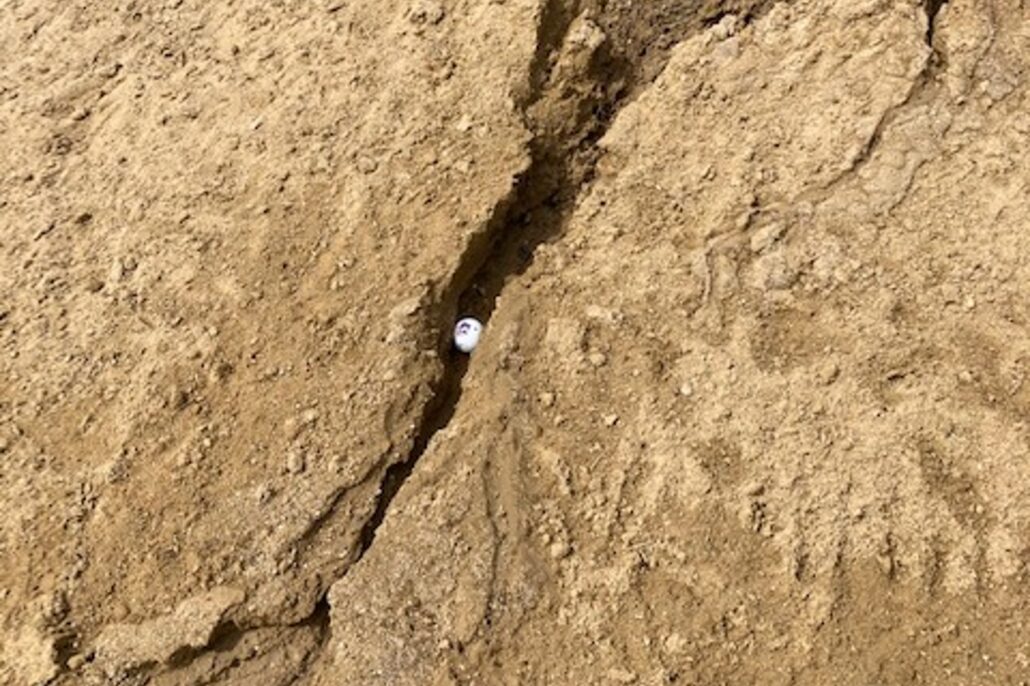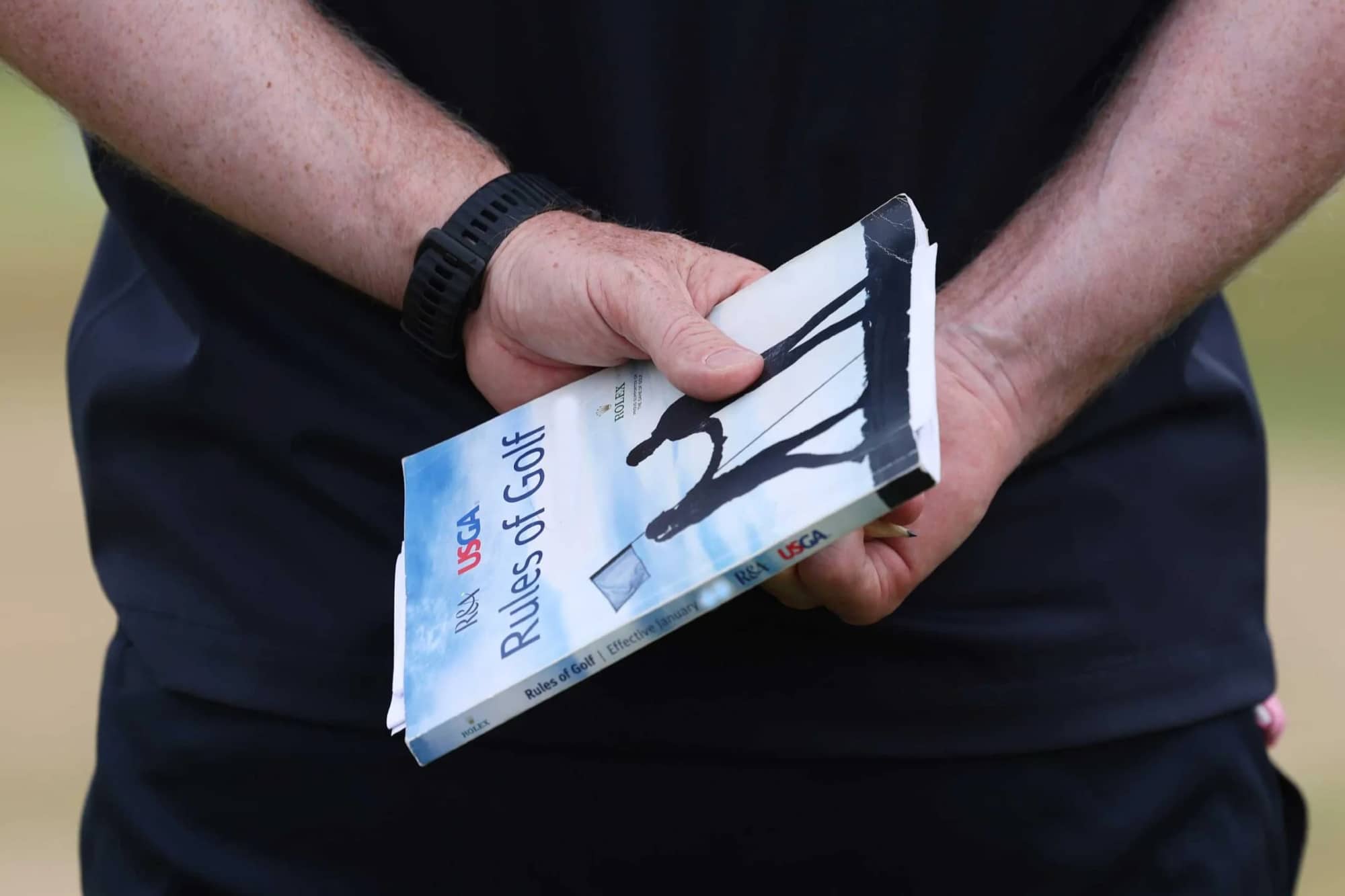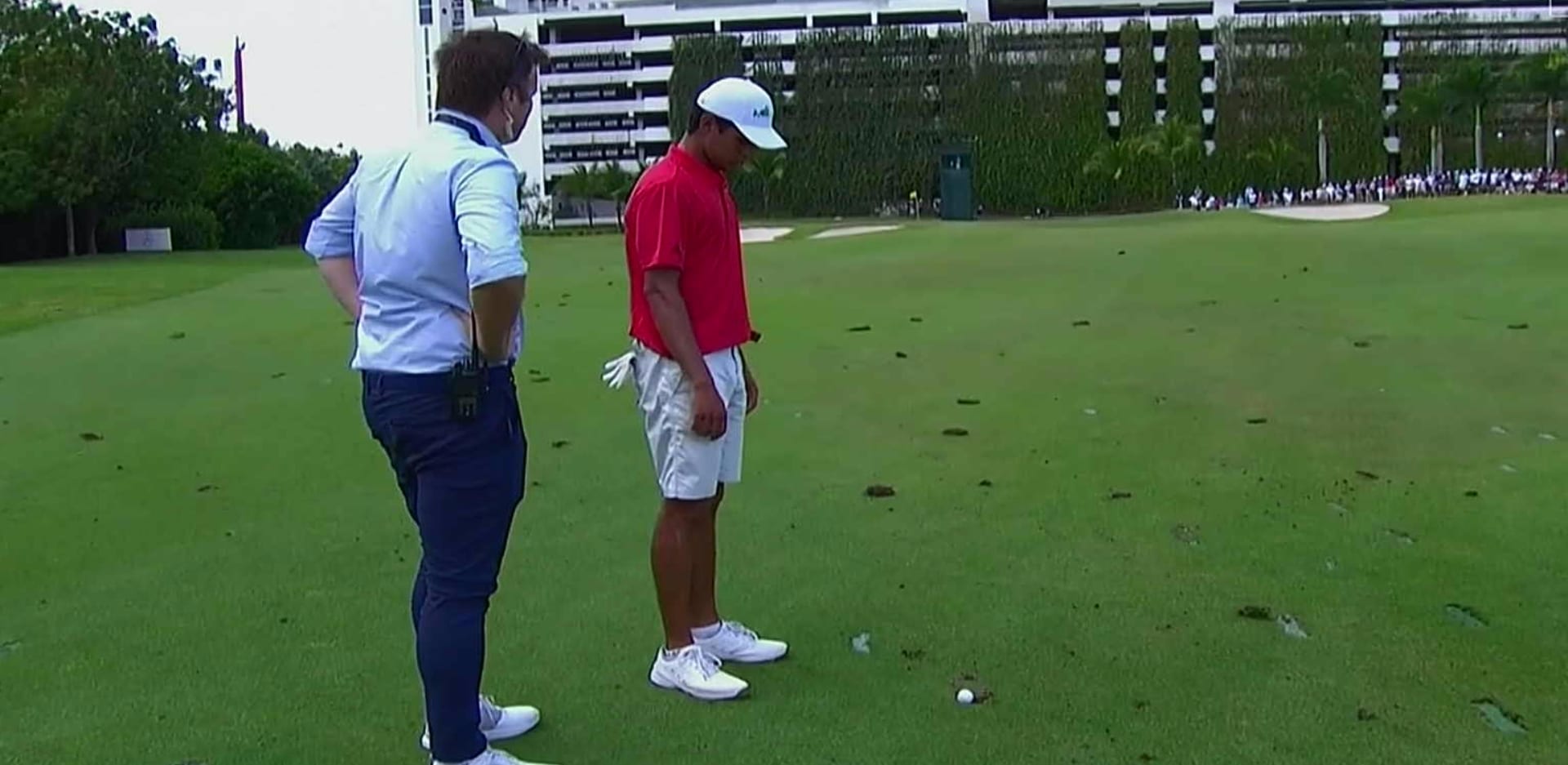
My ball is in a crack in a washed out bunker – do I have to play it as it lies?
The trap looks like it’s experienced an earthquake and there’s your ball right at the epicentre of the washed out bunker. Do you have to play it as it lies?
I’ve been saving this for a special occasion. Many thanks to Tuppence Hale who emailed me this incredible picture of her ball lodged in a huge fissure in a washed outr bunker. It was back in mid-summer when the rains came down and were washing out traps all over Britain.
Her opponent suggested she should play it as it lies. Now that we’re suffering similar deluges, I thought it worth wheeling it out and asking the question: what do we do with this?

What do the rules say about this washed out bunker situation?
A few days before my club championship, I had this exact situation – with washed out areas of bunkers across the course after the heavens dumped another load of H2O.
You’re going to think this is ground under repair by default, but you’d be mistaken. This is not the case with washouts.
However, before you all send out a collective cry of anguish and declare an unplayable, or try and hack it free, committees can grant relief and treat washout areas as GUR if a player has interference and asks on a situational basis.
That’s if they’ve not already been on the ball and seen what’s coming. Model Local Rule F-1 also allows committees to define abnormal course conditions on the course and adopt a procedure to give relief.
A little nugget in the committee procedures section at the back of the Official Guide to the Rules of Golf puts together some succinct examples of the options available.
One of these would do the trick nicely: “Areas in bunkers where sand has been removed by the movement of water resulting in deep furrows through the sand are ground under repair.”
So what now? Just ask, or, if this paperwork’s in place, you can take relief from the abnormal course condition under Rule 16.1c.
Remember, the nearest point of complete relief, and the relief area, has to be in the bunker.
If you can’t find that, you could use the point of maximum available relief in the bunker as the reference point, or you could take back-on-the-line relief, outside the bunker, for one penalty stroke.
Got a question for our expert?
Despite the changes to the Rules of Golf in 2019 and 2023, there are still some that leave us scratching our heads. I’ll try to help by featuring the best of your queries in this column.
What do you think about this washed out bunker rule? Let me know by leaving a comment on X.
Steve Carroll

A journalist for 25 years, Steve has been immersed in club golf for almost as long. A former club captain, he has passed the Level 3 Rules of Golf exam with distinction having attended the R&A's prestigious Tournament Administrators and Referees Seminar.
Steve has officiated at a host of high-profile tournaments, including Open Regional Qualifying, PGA Fourball Championship, English Men's Senior Amateur, and the North of England Amateur Championship. In 2023, he made his international debut as part of the team that refereed England vs Switzerland U16 girls.
A part of NCG's Top 100s panel, Steve has a particular love of links golf and is frantically trying to restore his single-figure handicap. He currently floats at around 11.
Steve plays at Close House, in Newcastle, and York GC, where he is a member of the club's matches and competitions committee and referees the annual 36-hole scratch York Rose Bowl.
Having studied history at Newcastle University, he became a journalist having passed his NTCJ exams at Darlington College of Technology.
What's in Steve's bag: TaylorMade Stealth 2 driver, 3-wood, and hybrids; TaylorMade Stealth 2 irons; TaylorMade Hi-Toe, Ping ChipR, Sik Putter.










